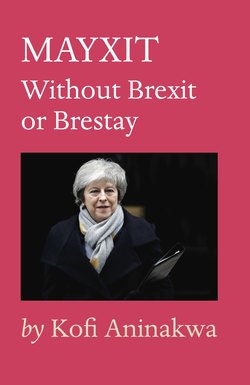Читать книгу MAYXIT - Kofi Aninakwa - Страница 3
Chapter Three Political Career
ОглавлениеHowever, her political ambitions were clear from the start.
Theresa May made her first foray into politics in 1986 when she became a councilor for the London Borough of Merton where she served as the Chairman of Education (1988–90) and Deputy Group Leader and Housing Spokesman (1992–94).
A successful career woman by now, she set her political aspirations high and stood for the seat of North West Durham in the 1992 general election. This attempt was unsuccessful, as was her attempt to win the 1994 Barking by-election.
Ever the resilient soul, she again stood for the 1997 general elections in which she was successfully elected as the Conservative MP for Maidenhead. In 1998, she became a member of William Hague's front-bench Opposition team, as Shadow Spokesman for Schools, Disabled People and Women, a position she held until June 1999.
She was appointed Shadow Education and Employment Secretary in the Shadow Cabinet in 1999. Following the 2001 election, she was moved to the Transport portfolio by the new Conservative leader Iain Duncan Smith.
A much-respected politician by the beginning of the new millennium, she was appointed the first female Chairman of the Conservative Party in July 2002. The following year she was made the Shadow Secretary of State for Transport after Michael Howard's election as Conservative Party and Opposition Leader in November 2003.
The year 2004 saw her assume the portfolio of Shadow Secretary of State for Culture, Media and Sport. The following year, David Cameron made her Shadow Leader of the House of Commons. Her career flourished over the ensuing years and she was appointed Home Secretary and Minister for Women and Equality by Prime Minister David Cameron in 2010. As Home Secretary, Theresa May also became a member of the National Security Council.
As Home Secretary she overturned several of the previous Labour Government's measures on data collection and surveillance in England and Wales. Under her tenure the Identity Documents Act 2010 was passed through which she brought about the abolition of the Labour Government's National Identity Card and database scheme.
As someone with strong views on immigration, in 2010 she promised to bring the level of net migration down to less than 100,000. She also rejected the European Union's proposal of compulsory refugee quotas.
During her tenure as Home Secretary, she also simultaneously held the office of Minister for Women and Equality from 2010 to 2012.
In June 2016 Prime Minister David Cameron announced his resignation after the outcome of the European Union membership referendum in which UK voted to leave the European Union. In the wake of Cameron’s resignation, Theresa May announced her candidacy for the leadership of the Conservative Party.
Theresa May received support from a number of Cabinet Ministers, such as Amber Rudd, Chris Grayling, Justine Greening, Jeremy Hunt, Michael Fallon and Patrick McLoughlin. She was declared Leader of the Conservative Party on 11 July 2016 following a positive outcome in the voting and the withdrawal of another potential candidate, Andrea Leadsom.
Theresa May assumed office as Prime Minister of the United Kingdom on 13 July 2016, becoming the nation’s second female PM after Margaret Thatcher A university friend, Pat Frankland, remember a time when she did not have political ambitions. I well remember, at the time, that she did want to become the first woman prime minister and she was quite irritated when Margaret Thatcher got there first."
She was first elected as a local councillor in Merton, south London in 1986, where she stayed until 1994, eventually becoming deputy leader.
She first stood in the election for the Labor seat in North West Durham in 1992, but came second to Hilary Armstrong, who became Labour's chief whip in the Blair government. Two years later she stood in a by-election in Barking, east London, but got fewer than 2,000 votes. In 1997 she was elected the Member of Parliament for Maidenhead, a constituency in Berkshire. She has held the post for 19 years.
Theresa May (middle in blue) speaking to reporters
Here she is playing musical chairs in 2001 at an event for the Pre-school Learning Alliance.
She became shadow transport secretary in 2001. In 2002, she became the Conservative's party's first female chairman under Iain Duncan Smith.
She was promoted to the shadow cabinet as shadow education secretary in 1999 under then-Conservative leader William Hague. From 1999 until 2010, she held a variety of shadow cabinet posts.
Here she is asking her first question to former Prime Minister Tony Blair in the House of Commons in 1998.
